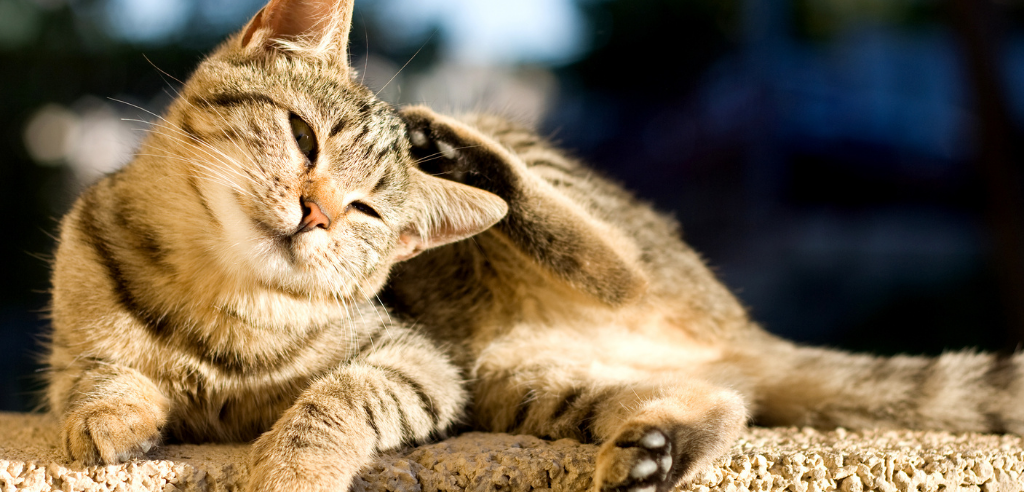Hay fever season is upon us once more and it’s not just us humans who are suffering, our pets are too! In fact, hay fever is one of the most common types of pet allergies.
Hay fever season is at it’s peak in the spring and summer months but it can last well into autumn. Tree pollen season usually starts earlier in the year, while grass pollen season gets heavier towards summer.
Our pets can come into contact with pollen by touching pollen filled plants with their face or paws or by inhaling it as it floats through the air.
The symptoms in cats and dogs differ from those in humans, so it might not always be easy to spot if your pet is suffering.
Here we’ve outlined the symptoms to look out for in both cats and dogs and some treatment advice to help keep their allergies under control.

Hay fever in dogs
Various studies have shown that dogs don’t start suffering from hay fever until after their first year of life and for unknown reasons, it also seems to affect more female dogs than male dogs.
Whilst all dogs can get hay fever, there are some breeds that are more likely to suffer than others. These include:
- Pugs
- German Shepherds
- English and French Bulldogs
- Shar Pei
- Labradors
- Golden Retrievers
- Setters
- Terriers
- Boxers
- Dalmatians
- Schnauzers
- Cocker Spaniels
- Bichon Frise
Hay fever symptoms in dogs
The main symptoms to look out for are in dogs are:
- Red nose
- Itchy skin
- Rubbing against furniture or carpets
- Excessive rubbing or licking of affected areas
- Hair loss
- Inflamed patches of skin
- Swollen, itchy paws
- Ear infections
- Sleepiness

Hay fever in cats
Unlike with dogs, there are no cat breeds which are more likely to suffer with hay fever. Hay fever in cats affects their skin more than it does their sinuses and it can make them chronically ill and very unwell.
Hay fever symptoms in cats
The main symptoms to look out for in cats are:
- Scratching that goes beyond normal grooming, especially around the bottom and ears
- Sores or missing patches of fur on the face or neck (caused by scratching)
- Itchy eyes
- Snoring – caused by an inflamed throat
- Chewing at the paws
Rule out fleas
Some of the above symptoms for both cats and dogs are more commonly associated with fleas, so it’s best to rule them out before consulting your vet for allergy advice. Check your pet’s coat for flea droppings and make sure you’re up to date with monthly treatments.
Treatment
It’s important to pay attention to your pet’s behaviour and if you suspect they might have hay fever, speak to your vet who will be able to recommend an antihistamine.
Prevention is often better than cure, but it can be hard to completely avoid pollen. Vets recommend keeping your pets indoors on days when the pollen count is high and working your dog in the early morning/evening when the pollen count tends to be lower.
After going outside, remove pollen that might have clung to your pet’s paws and face with a clean cloth.
Washing your pet once or twice a week will help to remove pollen for their fur and reduce the itchiness. Your vet will also be able to recommend a soothing shampoo you can use.



